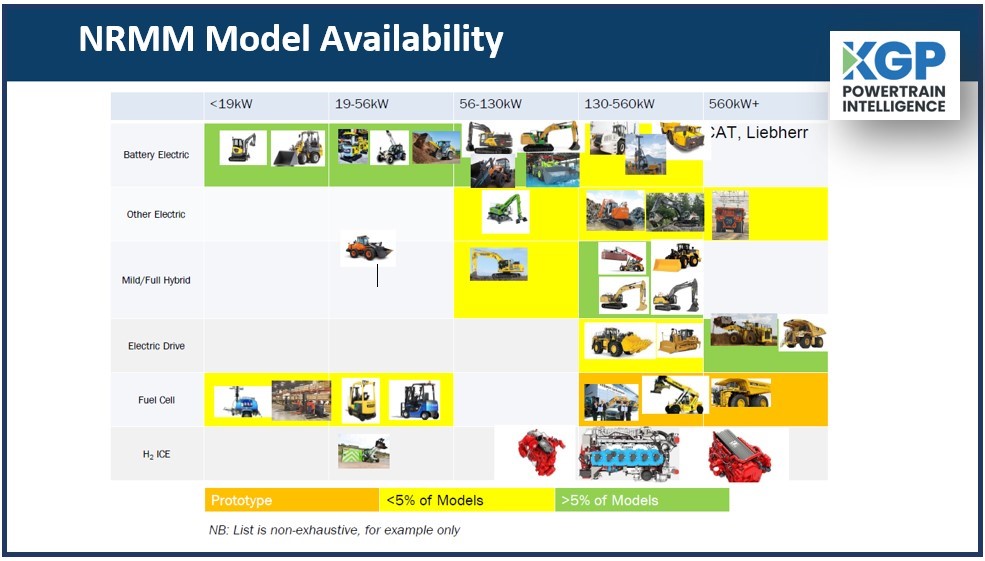Batteries for the construction sector: an overview
Alex Woodrow, Managing Director at KGP Commercial Powertrain Intelligence opened the second session of the Technical Forum of the CECE Congress dedicated to electrification. He provided an overview of the batteries' applications for construction machines based on three scenarios, each looking at a different potential future: Fuel Economy (base-case scenario); Fuel Economy & Environment (mid-case scenario); Climate Change Target – IPCC1.5 (high-case scenario). As part of the key drivers identified by KGP for the shift to alternative fuels, air quality & environment are placed on top followed by legislative restrictions.

In addition, it was highlighted that the share of zero emissions or electric machines is estimated to rise to around 17% by 2032 globally, while for electric trucks the same share will be over 25% by early 2030. This is mainly due to the difficulties encountered in converting larger machines to these technologies. KGP analysis also reported on a number of opportunities for lowering carbon in the non-road sector counterbalancing the high complexity of doing this shift. In terms of the benefits of low carbon emissions technologies for the non-road segment, the presentation focused on improved air quality, lower noise, lower fuel costs, reduced maintenance cost and improved productivity. As regards the negative aspects, the key challenge for the industry lies in investment in and capacity of batteries to reach full electrification by 2030.
Next to that, opportunities are instead found in investment in infrastructure and charging systems to help contractors to charge and reach the same level of productivity with the machine. Providing an overview of the available electrification architectures for NRMM equipment, the speaker insisted on the need for power batteries rather than energy batteries for hybrid technologies. It is worth noting that KGP registered an increase of around 500% of the electric machines available today compared to 2019. The need for hydrogen ICE batteries applications (possibly together with fuel cells) comes from the main issue identified by KGP analysis: it is not possible to get a full day of work in each use case.
KGP estimates the ability of the sector to achieve zero emissions targets in a period of five to ten years. As such, looking at 2030 targets, the carbon footprint will be reduced by replacing fossil diesel with increasingly electric, smaller machines and advanced biofuels from sustainable sources. Hydrogen is considered as an element of biofuels available in the future. As a consequence, both machines and job sites will be more efficient, while energy usage will be reduced by 10-20%.

Go back to the Technical Bulletin